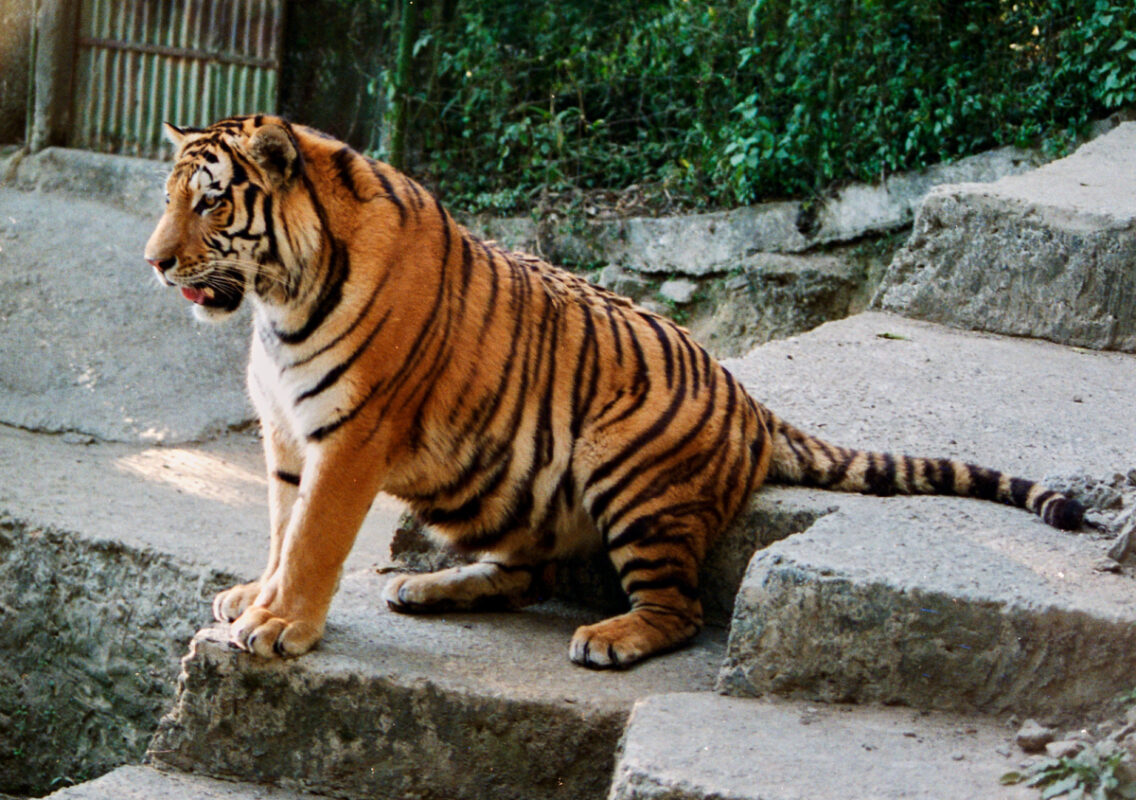In a momentous stride for India’s wildlife conservation, Darjeeling’s acclaimed Padmaja Naidu Zoological Park, nestled amidst the picturesque Birch Hill, marks a historic milestone with the arrival of the Siberian Amur Tigers. This heralds the end of India’s 12-year wait for these majestic beasts, underscoring the park’s stature as an epitome of wildlife preservation and exchange.
The much-anticipated Tigers, part of an exclusive exchange program, journeyed from Cyprus’s Pafos Zoo, affirming international cooperation in safeguarding endangered species. Arriving at the Netaji Subhash Chandra Bose International Airport in Kolkata, the Tigers were tenderly escorted by a dedicated team to their new abode in the verdant expanse of Darjeeling.
Director Basavraj S. Holeyachi, visionary steward of the Padmaja Naidu Zoological Park, elucidated the arduous yet rewarding journey that culminated in the park’s acquisition of these tigers. The exchange program saw the zoo bid farewell to two Red Pandas, a symbol of the park’s unwavering commitment to global conservation alliances.
Preceding their public debut, meticulous modifications were undertaken within the zoo’s precincts. The enclosures, painstakingly tailored to accommodate the Tigers’ needs while ensuring an unparalleled viewing experience for visitors, exemplify the park’s dedication to wildlife welfare and visitor delight.
As anticipation mounts among wildlife enthusiasts, crowd management protocols are primed for seamless visitor experiences. The zoo authorities meticulously orchestrate visitor inflow, assuring an immersive encounter with the rare Tigers alongside a rich tapestry of Himalayan fauna residing in near-natural habitats.
While the Siberian Amur Tigers stand as the pinnacle of this unveiling, the park’s legacy in wildlife preservation remains unparalleled. With successful breeding programs for Red Pandas, Snow Leopards, and other Himalayan species, the zoo resonates as a bastion of conservation excellence.
As the male and female Tigers, aged around one and a half years, acclimate to their new environment, they promise an unparalleled visual spectacle. With their vibrant orange coats and striking presence, they captivate visitors, symbolizing nature’s resplendence and the park’s dedication to preserving the world’s wildlife heritage.Watch Siberian Amur Tigers in Darjeeling Zoo, the Best Zoo in India
For those venturing into the heart of untamed beauty, Padmaja Naidu Zoological Park emerges as an unrivaled sanctuary. As the Siberian Amur Tigers take center stage, visitors are poised for an extraordinary rendezvous—an immersion into nature’s magnificence in the lap of India’s premier zoo.
How to Reach Darjeeling Zoo and Visitor Experience:
Accessing Darjeeling’s Padmaja Naidu Zoological Park is a picturesque journey that unfolds amidst the serene landscapes of the Birch Hill neighborhood. Travelers can arrive via air at Bagdogra Airport, followed by a scenic road trip to Darjeeling. From there, a short drive to the zoo is easily navigated via local taxis or rented cars. Shared taxis or jeeps from Darjeeling to the zoo typically cost around INR 300-500, while private car hires range from INR 1000-1500. This route promises a tranquil passage, inviting visitors into a realm where nature’s grandeur awaits.
Once within the park’s embrace, admission tickets, reasonably priced at INR 50 for adults and INR 20 for children, offer a gateway to an enthralling wildlife sanctuary. A visit to appreciate the diverse Himalayan fauna, including the mesmerizing Siberian Amur Tigers, necessitates a dedicated exploration time of 2-3 hours. Despite the anticipated influx of visitors, the zoo meticulously manages crowds, ensuring an unhurried and immersive encounter with wildlife treasures. Efficient queue management protocols, meticulously orchestrated by zoo authorities, promise a seamless experience, allowing each visitor a chance to revel in the splendor of the zoo’s inhabitants without undue wait times.
This convenient combination of transportation options, admission, and crowd management stands as a testament to the zoo’s commitment to ensuring an enriching and accessible experience for every visitor.

